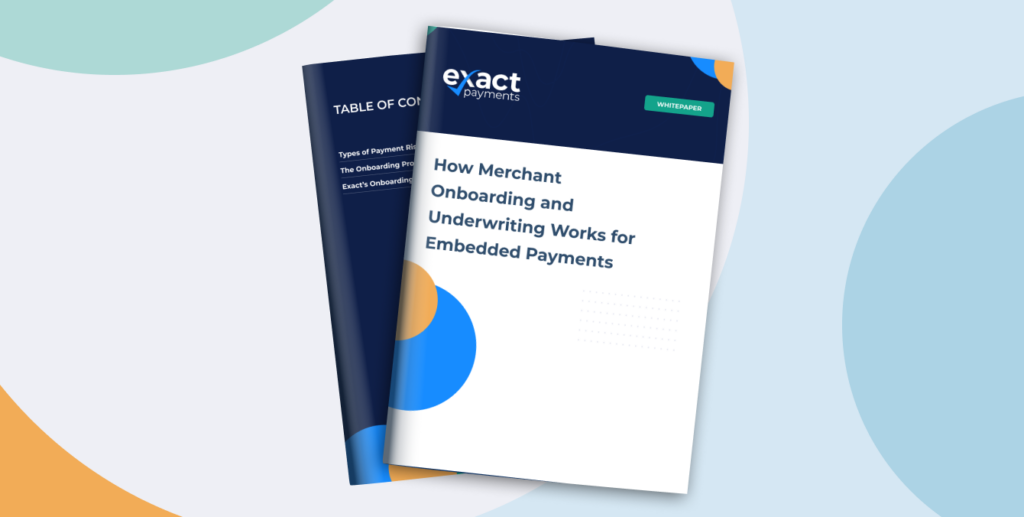How Merchant Onboarding and Underwriting Works for Embedded Payments

Identifying a person in the digital world has become incredibly complex, which has resulted in a significant increase in fraud. According to Visa, current online payment fraud is seven times higher than in-person payments. While this does include fraud at checkout, fraud can also be a problem at the merchant level—for example, organizations that seek merchant and bank accounts to launder money, fund terrorist operations, or simply merchants that have been unable to fund returns or have gone out of business in the past. In these scenarios, those who enable payment acceptance, such as acquirers, payment processors, and payment facilitators (PayFacs) carry the burden of risk and, in turn, must take a proactive approach to managing that risk.
A significant portion of a PayFac’s responsibility is assessing the risk of doing business with its merchant clients. In order to be approved to process payments, merchants are onboarded and evaluated using a rigorous underwriting process. SaaS businesses interested in reaping the benefits of payment facilitation, namely a new revenue stream, would ordinarily have to develop these processes, infrastructure, and expertise in-house. However, in the case of PayFac-as-a-Service (PFaaS), these processes are taken on by the SaaS company’s payments provider—companies like Exact Payments.
PFaaS providers offer onboarding and underwriting tools and services as a part of their solution to accurately assess merchant risk. This paper explains the types of payment risks, the tools and processes used to evaluate risks, and what you can expect when you onboard your merchant clients using a PFaaS solution.
Read the whitepaper to learn:
- What you can expect when you onboard your merchant clients
- What types of payment risks exist for merchants and software platforms
- What information is collected and why
- How Exact’s underwriting process shields businesses from risk
